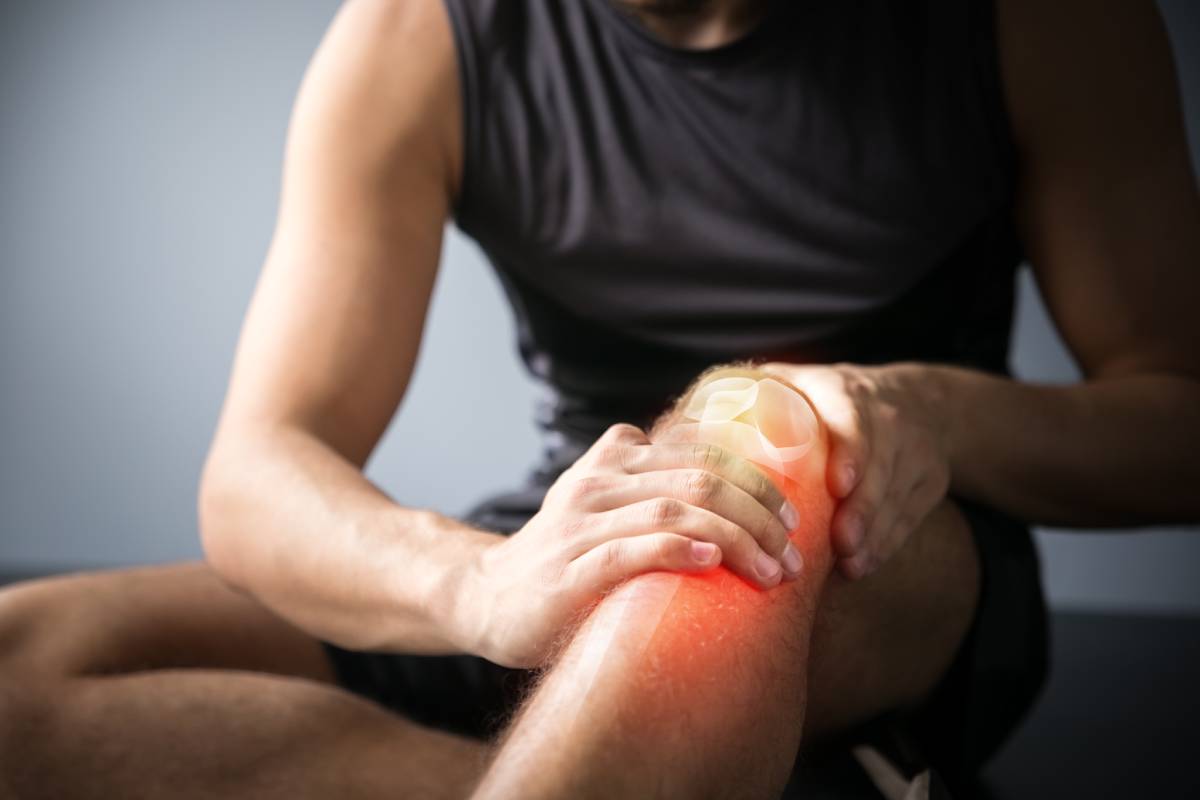Crepitus refers to the sound or feeling of cracking, crunching, or popping in the body. It is associated with conditions ranging in severity from mild to severe, but it may also occur in the absence of medical problems (Higuera, Vandever). Crepitus can occur in a few different scenarios: joints, the lungs, and other soft tissues. If it occurs in the lungs or in other soft tissues of the body, you should seek medical attention as it may be a sign of a serious condition (Aghajanzadah, Vandever). However, crepitus in the joints may not require intervention. In general, examination and treatment are indicated when crepitus occurs alongside pain, inflammation, and/or decreased range of motion (Aurora Health, Higuera, Song, Vandever).
Joint crepitus most commonly occurs in the knee, however, it can also occur in other joints like the shoulder and elbow (Aurora Health). Joints consist of bones, cartilage, ligaments, and synovium, and ideally allow for smooth movement and leverage. Cartilage provides cushioning against forces and stress for bone, ligaments are responsible for holding bones together, and the synovium contains fluid that lubricates movement within the joint (Higuera, Vandever). Much like with other systems of the body, dysfunction in one component can affect the function of the larger system.
A benign cause of crepitus is the buildup and bursting of tiny gas bubbles in joint fluid when the joint is bent (Aurora, Higuera, Song, Vandever). This phenomenon is related to the sounds produced by intentionally cracking joints. Individuals may also have a particular anatomy such that flexing (bending) and/or extending (straightening) a joint causes a ligament to be displaced and then “snap” back into place (Song, Vandever). If this type of crepitus is not associated with discomfort or other symptoms, there may be no need for concern or treatment. However, there are also many pathological causes of joint crepitus.
Patellofemoral syndrome, also known as runner’s knee, is when high levels of pressure between the femur and the kneecap lead to deterioration of soft tissues. A loss of proper cushioning can cause crepitus, as well as pain and inflammation. Increasing the load placed on the knee too fast, such as through exercise or physical labor, and overuse are two main causes of patellofemoral syndrome (Aurora, Higuera, Vandever). This condition typically requires long-term treatment due to pain and a potential decrease in function, but symptoms, including crepitus, may not fully resolve.
Other joint injuries, such as a hard impact or cartilage tear, can also disturb the overall system and lead to crepitus. Generally, an acute injury will also involve pain, swelling, and potentially bruising (Aurora, Higuera, Vandever).
Joint crepitus can also be a result of chronic disease. In particular, it is common in osteoarthritis, which is a degenerative condition caused by wear and tear (Aurora, Higuera, Song, Vandever, Pazzinatto). Joint crepitus in this situation also typically co-occurs with other symptoms, such as pain and decreased range of motion (Aurora, Vandever). Some researchers suggest that it is the first symptom of osteoarthritis in the knee, or at least an early one (Pazzinatto, Song). However, an observational study did not find an association between knee crepitus in osteoarthritis patients and later knee replacement surgery, suggesting that crepitus may not indicate disease severity (Pazzinatto).
Non-pathological joint crepitus can be approached with no intervention or at-home remedies according to an individual’s preference. For example, strengthening the muscles around a joint may be sufficient if you experience an occasional “popping” ligament (Song). However, crepitus with pain should trigger a doctor’s visit to evaluate its cause and determine what treatment may be needed. Treatment can range from adjusting physical activity levels and/or NSAIDs, to physical therapy, steroid injections, and/or surgery depending on the underlying cause (Aurora, Higuera, Song, Vandever).
References
Aghajanzadeh, M. et al. (2015). Classification and Management of Subcutaneous Emphysema: a 10-Year Experience. Indian Journal of Surgery, vol. 77, p. 673–677. DOI: 10.1007/s12262-013-0975-4
Aurora Health Care. (n.d.). Knee, shoulder & elbow cracking or popping (crepitus). Aurora Health Care. Retrieved from: https://www.aurorahealthcare.org/services/orthopedics/conditions/crepitus
Higuera, V. (2018). What’s to know about crepitus of the knee?. Medical News Today. Retrieved from: https://www.medicalnewstoday.com/articles/310547
Pazzinatto, M. F. et al. (2019). Knee crepitus is not associated with the occurrence of total knee replacement in knee osteoarthritis – a longitudinal study with data from the Osteoarthritis Initiative. Brazilian Journal of Physical Therapy, vol. 24, p. 329–336. DOI: 10.1016/j.bjpt.2018.09.009
Song, S. J. et al. (2018). Noise around the Knee. Clinics in Orthopedic Surgery, vol. 10, p. 1–8. DOI: 10.4055/cios.2018.10.1.1
Vandever, L. (2020). Knee Noise: Crepitus and Popping Explained. Healthline. Retrieved from: https://www.healthline.com/health/osteoarthritis/crepitus
